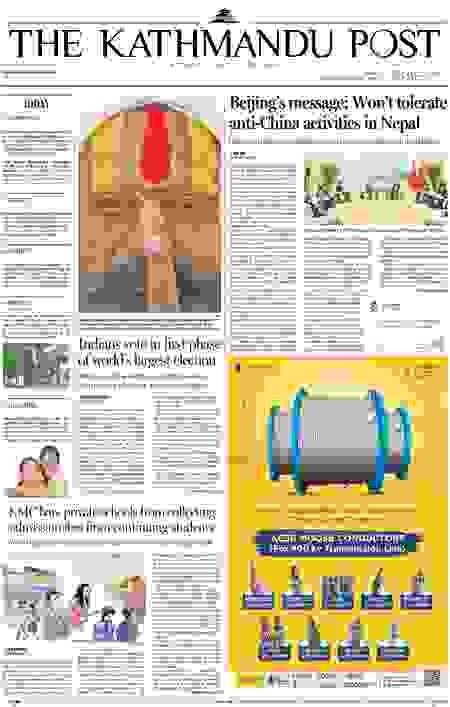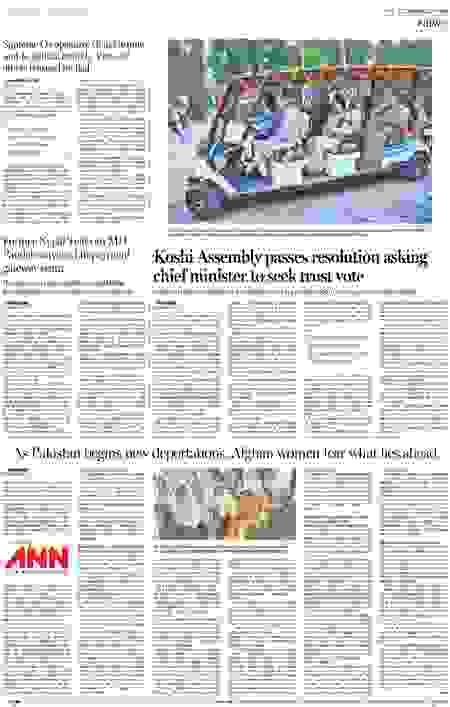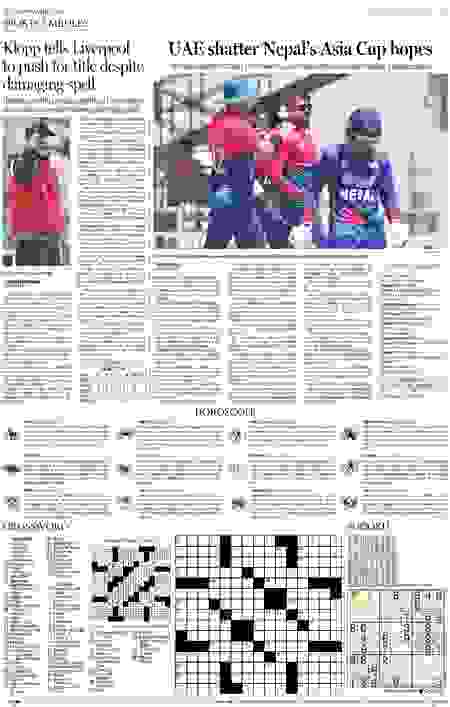Beijing’s message: Won’t tolerate anti-China activities in Nepal
Kathmandu,
A senior leader of the Communist Party of China warned that Beijing will not tolerate any third-country activities in Nepal targeting China.
During a meeting on Thursday with the general secretary of the ruling CPN (Maoist Centre), Dev Gurung, who is currently in Beijing on a 10-day visit, Liu Jianchao, minister of the International Department of the CPC Central Committee (IDCPC), told Gurung and the Maoist delegation that Beijing will not tolerate any actions in Nepal by third countries targeted against China.
The IDCPC is in charge of maintaining relations with political parties of other countries, especially fellow communist parties.
A jumbo delegation from the Maoist Centre is currently in China at the invitation of the IDCPC and it held talks with Liu and other leaders in Beijing on Thursday and Friday.
“We are in favour of world peace,” Liu told Gurung and the visiting Maoist delegation. “If any country tries to act against China in Nepal, we will not tolerate it.”
But Liu, who is being spoken of as the next foreign minister of China, did not name the country, Gurung told the Post over the phone from Beijing.
Earlier in January-end, Sun Haiyan, vice-minister of the IDCPC, made similar remarks in Kathmandu during a roundtable with major party leaders. Sun had alleged that some countries were trying to disrupt development cooperation between Nepal and China and defame bilateral relations.
“…Some criticise our relations. Some are trying to sabotage our bilateral relations and some have increased activity against China,” Sun had said during a consultative conference in Kathmandu between Nepali political leaders and the Communist Party of China. Her statement had sparked a controversy in Nepal.
During their Thursday meeting, Gurung told Liu that Nepal is quite aware about the elements trying to destabilise Nepal-China relations and creating misunderstanding and conflict between the two countries.
“Their [Liu’s] focus was mostly Western countries but he did not name any particular country,” said Gurung, adding that Nepal’s priority is stability and it will continue to focus on the principles of Panchasheel.
Besides discussing what China wants to see in Nepal, other issues included Nepal’s failure to present a list of projects to be executed under the Belt and Road Initiative, according to Gurung.
Liu also proposed involving political parties and other channels including stakeholders to facilitate the execution of various Chinese initiatives in Nepal, Gurung said.
This is the first-of-its-kind proposal from Beijing whose blueprint remains unknown.
Beijing is also displeased with the progress on the BRI, delays in implementing Chinese-funded projects in Nepal, and the slow progress of projects undertaken by the Chinese contractors and firms.
“We and our party thwarted attempts to destabilise our relations with China in the past, and the current government led by Pushpa Kamal Dahal will check such attempts in the future too,” Gurung conveyed to the IDCPC team.
Besides Liu, other senior IDCPC leaders including Sun were present at the meeting.
“Liu said that any military or security activities in Nepal targeting China will not be tolerated. Any move by a third country inside Nepal targeting China is not acceptable to China,” Gurung quoted Liu as saying.
Gurung said he assured the Chinese leaders that Nepal is committed to one-China policy and will not allow any activities detrimental to China’s security interests.
In his remarks, Liu told the visiting Maoist delegation that Beijing is pleased with the new political equation in Nepal and stressed the need for unity among Nepal’s leftists parties, said Gurung.
This is not the first time that China has encouraged unity among leftist parties in Nepal in general and pushed for unity between the CPN-UML and the CPN (Maoist Centre) in particular. In 2018, too, Beijing pushed for the unity between the UML and Maoist Centre.
The two parties merged to be the Nepal Communist Party, but that unity did not last beyond three years. Once again, Beijing is encouraging similar unity after the UML and the Maoist Centre partnered to form a new government in March first week after Prime Minister Dahal ended his alliance with the Nepali Congress.
But UML leaders have been dismissing the chances of a new leftist unity. Recently, UML Chairman KP Oli outright rejected the idea of unity between communist parties of Nepal.
“At present, unity among leftist parties is not a necessity,” Oli said while addressing the UML’s parliamentary party on Monday.
He, however, said that “there is a need for cooperation among the forces that are in favour of good governance and national unity.” There is also an opposition voice in the Maoist Centre on the potential unity between the UML and Maoist Centre.
“We are pleased with the formation of government through partnership between UML, Maoist Centre and other communist parties,” Gurung quoted Liu as saying.
“The unity between the two communist parties is good for the Nepali people. We want a stable communist government in Nepal,” Gurung said, again quoting Liu.
“We want to see the leftist parties of Nepal united for the greater stability and prosperity of the country. We also believe that Nepal’s prosperity lies in the hands of communist forces. We are always in favor of stability and development and stand ready to provide all possible support to Nepal,” Gurung quoted Liu as saying at the meeting.
It is natural for any communist party in the world to favour unity among the communist parties in other parts of the world, Gurung said.
“Liu said, in recent years, under the joint leadership of President Xi Jinping and Nepali leaders, relations between the two countries have continued to develop,” the IDCPC said in its statement released on Friday.
“The Chinese side supports the Nepali side in exploring a development path that suits its national conditions, and is willing to help Nepal prosper and develop.”
“The CPC attaches great importance to its friendly relations with the Communist Party of Nepal (Maoist Center). Under the new situation, it is willing to expand exchanges between the two parties, deepen exchanges and mutual learning of experience in state governance and administration, and promote practical cooperation between the two sides in agriculture, investment, infrastructure, border trade and tourism through ‘political party + [plus]’ and other channels, so as to push China-Nepal relations to a new level,” said the statement.
Liu in the meeting had expressed his displeasure at Nepal’s failure to present a list of projects to be developed under the BRI and as per the agreements signed between two sides after 2016 including during the state visit of Chinese President Xi Jinping to Nepal in 2019 October.
Gurung thanked the Chinese side for its long-term support in safeguarding Nepal’s sovereignty and independence and achieving economic and social development, according to the Chinese statement.
“The Nepali side firmly adheres to the one-China principle and does not allow any force to use Nepal’s territory for anti-China activities. The Communist Party of Nepal (Maoist Center) highly admires the CPC’s governance achievements and governance concepts, and is willing to further strengthen exchanges between the two parties, deepen theoretical exchanges, promote Nepal-China relations for healthy development, and promote regional peace, and development and stability,” the IDCPC statement read.









